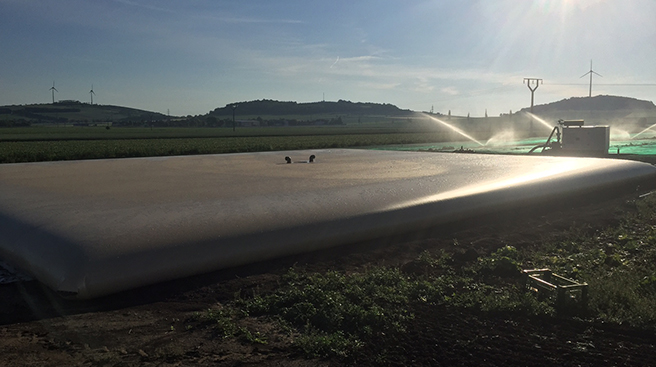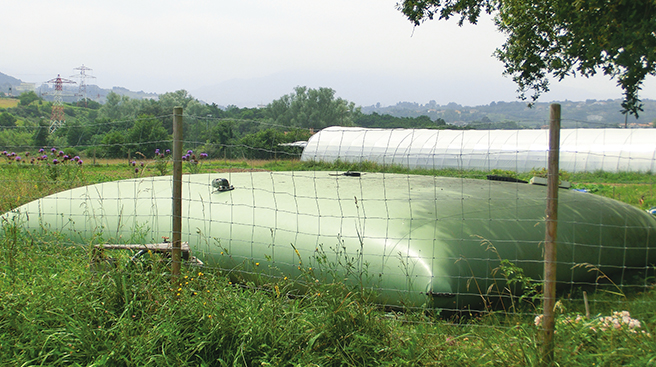The year 2020 has known a difficult start and it’ll not end with the drought, which promises to be alarming for this summer. Until now, African countries were mainly affected, but today it’s the world that has to face increasingly frequent and long periods of drought. In France, more than 66 departments are already on drought alert. Rainwater harvesting remains the best way to counter this scourge. Many solutions are existing, such as the flexible tank, for rainwater and runoff water storage. But do you know how to define your water needs and determine the ideal volume for your tank?
Why install a rainwater harvesting system?
Whether you are a farmer or a factory, rainwater harvesting has many ecological advantages. To install a rainwater harvesting system allow to reduce the use of drinking water in order to preserve the planet. But not only that!
Indeed, water recovery can also offer economic advantages. For example, every year, the agriculture consumes almost 4.7 billion m3 of water. At the average price per m3 of mains water, this volume corresponds to 17 billion euros.
Motivated by the environment and economic aspect, these free waters will be re-employed for :
- watering animals,
- phytosanitary preparation,
- process of manufacturing,
- cleaning of buildings or equipment,
- small irrigations,
- fire protection,
- or comfort in the event of restrictions.
Moreover recovering runoff is important to avoid the risk of flooding (see our inflatable anti-flood system).
Why choose a flexible tank?
The flexible tank is self-supporting closed storage. Created with high resistance technical tissues, it guarantees the long-term storage of clean water protected from all contamination and evaporation. It is Economic and remains 70% less expensive than other traditional solutions. This flexible tank doesn’t require any civil engineering, no maintenance, and can be deployed easily and quickly. Furthermore, its fabric allows it to withstand high temperatures. Perfect in every way.


How to define its water needs by applications? (Agricultural) ?
Some applications need more or less water volume compared to others. To help you, we have realized some examples to calculate your water needs according to your farms :
| 1 dairy cow | 120 to 140 l / day | 1 serum pork | 15 to 20 l / day |
| 1 adult cattle | 50 to 60 l / day | 1 horse | 50 to 60 l / day |
| 1 sheep or 1 goat | 5 to 8 l / day | 100 chickens | 10 to 12 l / day |
| 1 pregnant sow | 15 to 20 l / day | 100 hens | 35 to 40 l / day |
| 1 suckler sow | 25 to 30 l / day | 100 hens in battery | 50 to 60 l / day |
| 1 fattening pig | 7 to 10 l / day | 100 rabbits | 30 to 40 l / day |
About the irrigation of agricultural crops, the flexible tank is more appropriated for storage named “buffer”. Indeed, it can be used to empty your water harvesting system who is already in place or to store pumping water present in your wells and/or falsifiers after a thunderstorm. Consequently, drip systems can be implemented on your more distant crops. Think about it! 
How to determine the collection capacity of your roof?
And yes, your rainwater yield also depends on the surface of your roof! To calculate it, you just need to do this simple calculation S (m2) x PV (l / m2) x Ct with:
- S = Surface of your roof (generally corresponding to that of your building, without taking into account the inclination),
- VP = Rainfall value (the local amount of annual precipitation, obtain it from your town hall),
- and Ct = Roofing coefficient.
The coefficient of the roof varies depending on the type of roof you have. Don’t worry, we give you everything below:
| Type of roof | Coefficient |
| Clay roof tile, baked and glazed | 0.9 |
| Cement or slate roof tile | 0.8 |
| Flat roof with gravel | 0.6 |
| Green roof | 0.4 |
Keep your two results, they will serve you for the third and final step which follows.
How to size your tank?
Once you have calculated your water need according to your application and your collection capacity, it remains to define the ideal volume of your flexible tank. For this, it will be necessary to take into account the formula calculation factor x K:
- the calculation factor: the smallest value between the amount of water captured by your roof and your need for rainwater,
- and the K: the constant which is 0.0625.
Here, you have all the keys in hand to define your rainwater recovery system. If you liked this article, we invite you to also read our article “3 reasons to use the flexible water storage tank for your irrigation system”.